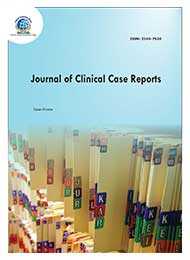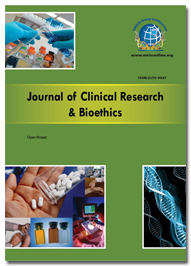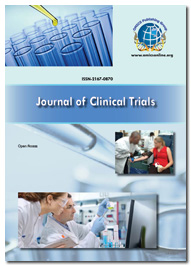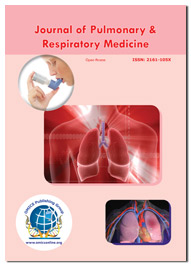Case Reports Conference
Case Reports 2017 will pursuit a platform for global promotion and recognition of case studies as reference for safe treatment therapy. It includes the discussions and speeches on different case reports filed on diseases and disorders by medical professionals from all parts of the world. It also involves the advances in treatment therapies with minimization of adverse reactions in promotion of a healthier life.
Theme: Sharing the Reason behind Patients Happiness of Well Being
Conference Highlights
Psychology Case Reports:
Psychology involves the study of mind and behaviour. Psychologists explore concepts such as perception, cognition, emotion, intelligence, phenomenology, motivation, attention, brain functioning, personality, behaviour, and interpersonal relationships also including psychological resilience, family resilience, and other areas. Psychological knowledge is often greatly used to the assessment and treatment of mental health problems, ultimately aims to benefit society.
-
Schizophrenia- It is a type of mental disorder which is characterized by the abnormal social behavior and the person fails to recognize what is real. Symptoms include false beliefs, hallucinations, and confused thinking’s. The patient is diagnosed by the observed behavior and experiences.
-
Depression- It is a state of low mood an the patient with depression generally feels sad, hopeless, worthless etc.
-
Alzheimer’s disease- It is a disease that destroys the memory and other mental functions gradually. The disease has no cure but they can be manageable with the help of medicines.
-
Anxiety- This is a disorder of serious mental illness. Patients with anxiety generally feel anxious, nervousness at different conditions; it disturbs the person’s ability to lead a normal human life.
-
Phobias- It is a type of anxiety disorder in which the patient persistently feels fear of an object or a situation.
-
Other psychology diseases and disorders.
Case Reports on Neurology:
This branch involves the diagnosis and treatment of diseases and disorders of central and peripheral nervous system. The disorders of nervous system are categorized by the location and the dysfunction. The major neurological disorders are:
-
Epilepsy- It a group of related disorder which are characterized by a liability of recurrent seizures. It is a problem associated with the brain’s electrical system. The person suffering from epilepsy may have partial or generalized seizures.
-
Dizziness- Dizziness is a common thing which is not a disease, it is the symptom of other disorders. Generally it is the feeling of lightheaded and unbalanced. Sometimes dizziness may cause fainting.
-
Multiple Sclerosis- It is a condition in which the communication between the brain and body is disrupted and the nerves get deteriorated themselves, which is irreversible.
-
Back pain- It is the pain that usually originates from muscles, nerves, joints, bones. Back pains are usually self-limiting and non-progressive.
-
Brain and spinal cord injury- These are generally the sudden physical damage to the brain and spinal cord. Spinal cord injury may also lead to the loss of mobility.
-
Dementia- The daily functioning of the human being interfered with the thinking and social symptoms.
-
Other neurological diseases and disorders.
Ophthalmology Case Reports:
This branch of medicine deals with the anatomy, physiology and diseases of the eye. The ophthalmology is a vast topic that includes the major subspecialties which is either concern with certain diseases or diseases of certain parts of the eye. Some of them are the following:
-
Cataracts- It is the clouding of normally clear lens of human eye. People with cataract feel difficulty in reading, driving especially in night.
-
Glaucoma- It is a very common eye disorder that results in optic nerve damage, which is also associated with the increased fluid pressure in eyes.
-
Ocular Oncology- It is the case that involves the tumors and cancers of eye which are benign (like choroidal nevus, choroidal hemangiomas) and malignant (iris, ciliary body, choroid, conjunctiva, eyelid, orbit and metastatic melanoma to the eye), retinoblastoma, ocular metastasis.
-
Oculoplastics- It is the reconstruction of eye and the associated structures. It involves various surgical procedures dealing with different parts of eye.
-
Other diseases and disorders of eye.
Dentistry Case Reports:
This is the branch of medicine that deals with the oral cavity diseases and disorders. As mouth is the gateway of food to the body it is invaded by many bacteria, viruses, fungi, parasites. Thus many infectious diseases may affect the oral cavity and some of them are:
-
Dental Caries- This involves the breakdown of teeth due to different activities of bacteria. The cavities can turn to different colors and the symptoms include difficulty with eating, pain and inflammation.
-
Periodontal Diseases- These affect the alveolar bone, periodontal ligament, cementum and gingiva. The treatment involves the removal of biofilm deposits, scaling and root planning.
-
Gingivitis- It is a very common gum disease that involves the swelling, redness and inflammation of gums but if untreated it may lead to tooth loss.
-
Periodontitis- It is characterized by the inflammation of supporting tissues of tooth and the loss of gum attachment due to periodontal tissues. The frequency and severity of disease increases with age.
-
Oral Candidiasis- The mucus membranes of mouth are affected by mycosis candida species. The lesions appear at site of infection there are no signs and symptoms but in some cases inflammation may occur
-
Other dental diseases and disorders.
Cardiology Case Reports:
Cardiology is a branch of medicine dealing with disorders of the heart. Heart is an important muscular organ in humans and other animals, pumps blood through the blood vessels of the circulatory system. The drugs that are used to treat other disorders in body show a great impact on heart causing various side effects. Hence case reports on cardiac disorders and diseases have a great value and help in advancing and development of treatment strategies.
-
Congestive heart failure-This condition occurs when the heart fails to pump the blood effectively, due to this fluid gets accumulate in the tissues of body. Symptoms mostly include congested lungs, breathing difficulties, water retention, dizziness and weakness.
-
Cardiac arrhythmia- It is a condition occurs when the heart beat is irregular. If the heart beat is too fast that is 100 per minute or more then it is known as tachycardia and if the heart beat is 60 per minute or less it known as bradycardia. These condition symptoms include breathing problems, palpitations, chest pain.
-
Myocardial and Pericardial disease- This condition occurs when the blood flow stops to part of the heart causing damage to the heart muscle. Pericardial disease is a diseased condition which results in compression of heart, there by blood flow to heart gets restricted.
-
Vascular heart disease- This deals with blood vessels and valves of heart. This symptoms include shortness of breath, dizziness, weakness etc.
-
Angina pectoris- It is a condition occurs when there is inadequate supply of oxygen to the heart muscle and thereby chest pain occurs. The pain that occurs usually in severe and crushing often also spreads to shoulders, arms and neck.
-
Hypertension- It is a chronic medical condition in which the blood pressure in the arteries is elevated. It is expressed by two measurements (100-140 mmHg systolic and 60-90 mmHg diastolic).
-
Atherosclerosis- This condition occurs because of the thickening of the artery walls as a result of accumulation of WBC.
-
Other cardiovascular diseases and disorders
Pulmonology case reports:
Pulmonology is a medical specialty that deals with diseases involving the respiratory tract. Physicians of this category are specially trained in diseases and conditions of the chest, particularly pneumonia, asthma, tuberculosis, emphysema, and complicated chest infections. Medication involves inhalation (bronchodilators and steroids) or in oral form (antibiotics, leukotriene antagonists). A common example being the usage of inhalers in the treatment of inflammatory lung conditions such as asthma or chronic obstructive pulmonary disease. Oxygen therapy is often necessary in severe respiratory disease (emphysema and pulmonary fibrosis). When this is insufficient, the patient might require mechanical ventilation.
-
Pulmonary fibrosis- Also known as scarring of lungs. Scars are formed in the lungs tissue because of the accumulation of excess fibrous tissue and this further leads to thickening of the lungs walls and thereby there is reduction in oxygen supply in the blood.
-
Rheumatoid lung disease- This involves group of lung problems related to rheumatoid arthritis such as blockage of airways, scars in lungs, fluid in the chest etc.
-
Asthma- A chronic medical condition in which the persons airway becomes inflamed, narrow, swell and produce extra mucus. It includes the symptoms of trigger coughing, wheezing, shortness of breath.
-
Bronchitis- A condition that occurs when the lining of the bronchial tubes become infected or inflamed.
-
Chronic obstructive pulmonary disease (COPD) - This involves the group of lung diseases that block airflow and make it difficult to breathe. It involves the general symptoms such as wheezing, chronic cough.
-
Other pulmonology diseases and disorders.
Gastroenterology Case Reports:
Gastrointestinal diseases refer to diseases involving the gastrointestinal tract, namely the oesophagus, stomach, small intestine, large intestine, rectum and the accessory organs of digestion in the liver, gall bladder and pancreas. It is the part of body which helps in supply of nutrients and necessary requirements to the body. It helps in supplying energy and growth development.
-
Ascites- Fluid gets build up in the abdominal cavity, within the peritoneal cavity that is located within the abdomen and abdominal organs. The symptoms include the swelling of abdomen and the ankles.
-
Chronic Hepatitis C- Blood borne infection often cause by a virus. This largely affects the liver.
-
Constipation- Infrequent bowel movements those are difficult to pass. The causes of this condition are lifestyle factor, diet, stress etc.
-
Diarrhea- It is an increase in frequency of bowel movements and an increase in the looseness of stool or both. It can be acute or chronic having different treatment for both.
-
Esophageal Cancer- This cancer develops in either upper portion or lower portion of oesophagus. This affects the lining of the oesophagus, the muscular tube that connects the mouth to stomach.
-
Gastritis- Swelling and inflammation of the lining of the oesophagus occurs. If untreated it may lead severe conditions such as stomach cancer.
-
Hemorrhoids- These are the swollen veins and clusters of tissues that develop in the anus and lower rectum.
-
IBS (Irritable Bowel Syndrome)- This disturbs the functioning of the colon by interfering with digestion by preventing the bowel from properly advancing the stool. Based on severity of the condition it ranges from mild to severe appearance.
-
Ulcerative Colitis- This is a form of IBS characterized by severe diarrhoea and abdominal pain. This may sometimes leads life threatening complications.
Diabetes Case Reports:
Diabetes Mellitus: Diabetes, it is a group of metabolic diseases in which involves high blood sugar levels over a prolonged period. Diabetes is due to either the pancreas is not producing enough insulin or the cells of the body not responding properly to the insulin produced. The three main types of diabetes mellitus:
· Type 1- Insulin dependent
· Type 2- Insulin independent
· Type 3- Gestational Diabetes
Diabetes Insipidus: This condition is characterized by excessive thirst and excretion of large amounts of severely dilute urine with reduction of fluid intake having no effect on the concentration of the urine. There are different types of DI, where each type involves a different set of causes.
The most common type in humans is the neurological form, called Central DI (CDI), which involves a deficiency of arginine vasopressin (AVP), also known as antidiuretic hormone (ADH).
The second common type of DI is nephrogenic diabetes insipidus (NDI), which is due to kidney or nephron dysfunction caused by an insensitivity of the kidneys or nephrons to ADH. DI can also be gestational, or caused by alcohol or some types of drug abuse. DI should not be confused with nocturia.
Obstetrics and Gynaecology Case Reports:
Obstetrics, the field of medical practice that deals with pregnancy, childbirth, and the care of mothers and infants during the postpartum period. This study mainly involves the prenatal, child birth, post natal, and the care of neonates.
Gynaecology the branch deals with the physiology and medicine of the functions and diseases specific to women and girls, especially those affecting the reproductive system. As with all surgical specialties, gynaecologists sometimes employ medical or surgical therapies (or many times, both), depending on the exact nature of the problem that they are treating. Pre- and post-operative medical management will often employ many standard drug therapies, such as antibiotics, diuretics, antihypertensive, and antiemetic’s. Additionally, gynaecologists may also use of specialized hormone-modulating therapies to treat disorders of the female reproductive system.
-
Uterine fibroids- These common benign growths that develop in the muscular wall of the uterus. They can vary in size from a tiny to cantaloupe, because of their size and location they can lead to problems such as heavy bleeding with menstrual pain.
-
Endometriosis- It is a disease in which the tissue which normally grows inside the uterus grows outside. The symptoms include pelvic pain and infertility.
-
Ovarian cysts- It is any fluid filled sac that is present in the ovary. Majority of cysts are harmless. When they produce bloating lower back pain and lower abdominal pain occurs but when th cyst either break opens or twists the ovary they result in vomiting or fainting.
-
Menstrual disorders- This includes disorder of ovulation, disorders of cycle length, disorders of menstrual flow, dysmenorrhea etc.
-
Vaginal Infections- It consists of 3 primary conditions bacterial vaginitis, vulvovaginal candidiasis and trichomonas. The symptoms include excessive amounts of discharge, abnormal colorations, burning sensation during urination, itching on the outside of vagina.
-
Osteoporosis- It is a condition in which there is decreased bone strength increases the risk of a broken bone.
-
Termination of pregnancy- It occurs by the removal or forcing out the fetus from the womb before it is able to survival. It may also occur spontaneously which is called as miscarriage.
-
Trophoblastic tumors- Generally this term is used for pregnancy related tumors. These are generally rare and occur when cells in the womb start to proliferate uncontrollably.
-
Other obstetrics and gynecology diseases and disorders.
Epidemiology Case Reports:
Epidemiology is the science that studies the patterns, causes of diseases- disorders, effects of health and disease conditions in defined populations. It is the key element of public health, and informs policy decisions and evidence-based practice by identifying risk factors for disease and targets for preventive healthcare. Major areas of concern in epidemiological study include disease etiology, transmission, outbreak investigation, disease surveillance and screening, bio monitoring, and comparisons of treatment effects such as in clinical trials.
-
Respiratory tract infections- These are of two types upper respiratory tract infections and lower respiratory tract infections. The lower respiratory tract infections are generally serious than upper respiratory tract infections. These generally occur through infection.
-
STIs including HIV and blood-borne viruses- These generally spread through the contamination of blood with blood or other body fluids.
-
3 Food- and waterborne diseases and zoonosis- These diseases easily affect the human body and generally caused by pathogenic microorganisms.
-
Emerging and vector-borne diseases- These diseases occur through vectors, living organisms which can transmit infectious diseases from human to animal.
-
Vaccine-preventable diseases- These are diseases that can be easily preventable on immunization at a lower age.
-
Zika Virus- It is the disease spread to people through mosquito bites. . The incubation period (the time from exposure to symptoms) of Zika virus disease is not clear, but is likely to be a few days. This includes the symptoms of Zika virus disease are fever, rash, joint pain, and conjunctivitis (red eyes). A wide research is going on present to eradicate this disease.
-
Other epidemiological diseases and disorders.
Surgical Case Reports:
The purpose of this session is to contribute to the progress of surgery by providing clinicians and researchers with an educational forum in which to share their personal experience and novel treatments and rare cases encountered by colleagues all over the world from whom contributions are welcomed.
Case reports help in developing of skills and it would be clinically interesting to an international audience of surgeons trainees and researchers in all surgical subspecialties as well as clinicians in related fields.
Case Reports on Pediatrics:
It is the branch of medicine that deals with the medical care of infants, children. The body size differences are paralleled by maturational changes. The smaller body of an infant or neonate is significantly different from that of an adult. Genetic variance, birth defects and developmental issues are of greater concern to paediatricians than they often are to adult physicians.
The major significant difference between paediatrics and adult medicine is that children are minors and, in most jurisdictions, cannot make decisions for themselves.
-
Autism- It is generally characterized by the impaired restricted and repetitive behaviour. These signs often develop gradually with increase in age. Both genetic and environmental factors come into account of the causes of autism.
-
Rickets- This disease occurs due to the deficiency of Vitamin D, Calcium or Phosphate. There are different types of rickets, mostly this occurs due to the deficiency of food.
-
Polio- This is one of major diseases that affect children and cause paralysis, can be easily preventable by the polio vaccine.
-
Common Cold and Gastroenteritis- As children are still in developing stage they have very less immunity and hence can easily affected by the climatic changes and various other infections
-
Respiratory syncytial virus- It is a paramyxovirus which causes the diseases of respiratory tract, it causes diseases like bronchiolitis and pneumonia in children and can also lead sudden death.
-
Other pediatric diseases and disorders.
Case Reports on Adverse Drug Reactions & Drug Interactions:
An adverse drug reaction (ADR) is an injury caused by taking a medication.[1] ADRs may occur following a single dose or prolonged administration of a drug or result from the combination of two or more drugs. There are 6 types of ADRs they are:
Type A: Augmented
Type B: Bizarre
Type C: Chronic
Type D: Delayed effect
Type E: End of use
Type F: Failure of therapy
A drug interaction is a situation in which a substance (usually another drug) affects the activity of a drug when both are administered together. This action can be synergistic (when the drug's effect is increased) or antagonistic (when the drug's effect is decreased) or a new effect can be produced that neither produces on its own.
Types of drug interactions are:
1) Drug-Drug Interactions
2) Drug-food interactions
3) Drug-smoke interactions
4) Drug-alcohol interactions
5) Drug-environmental interactions
6) Drug-herb interactions
Case Reports on Public Health:
It is the science that deals with the mechanisms of preventing disease, promoting health through organized efforts by involving different communities, societies, organizations. It involves health analysis and aims to promote health of entire populations. It involves the total system but not the eradication of particular disease. It mainly involves the three major points that are:
-
The assessment and monitoring of the health of communities and populations at risk to identify health problems and priorities
-
The formulation of public policies designed to solve identified local and national health problems and priorities.
-
To assure that all populations have access to appropriate and cost-effective care, including health promotion and disease prevention services.
Dermatology Case Reports:
The branch of medicine that deals with the medical and surgical aspects of skin, hair and nails. It sometimes also involves cosmetic care and enhancement.
The main part of dermatology majorly involves skin which plays a key role in protecting the body against different pathogens and helps in reducing the excessive water loss from it. The other functions of skin include insulation, temperature regulation, sensation and the production of vitamin D folates.
Case Reports in Cancer Science
Cancer Science is a peer-reviewed medical journal covering research in Oncology. Cancer Science aims to present research that has a significant clinical impact on oncologists or that may alter the disease concept of a tumor. Cancer is not one disease. It is a group of more than 100 different and distinctive diseases. Cancer can involve any tissue of the body and have many different forms in each body area. Most cancers are named for the type of cell or organ in which they start. Cancer is the name given to a collection of related diseases. In all types of cancer, some of the body's cells begin to divide without stopping and spread into surrounding tissues. Cancer can start almost anywhere in the human body, which is made up of trillions of cells.
Case Reports in Clinical Pathology
Clinical pathology supports the diagnosis of disease using laboratory testing of blood, tissues, and other body fluids. There are types of specimens used clinical pathology. They are blood, urine, sputum, feces, and other body fluids. It is the branch of medicine dealing with health care for women, especially the diagnosis and treatment of disorders affecting the female reproductive system. It deals with women's complaints gynecological diseases , fertility, pregnancy, '.Pathology (from the Ancient Greek roots of pathos (πάθος), meaning "experience" or "suffering", and -logia (-λογία), "an account of") is a significant component of the causal study of disease and a major field in modern medicine and diagnosis. Pathology is a branch of medical science primarily concerning the examination of organs, tissues, and bodily fluids in order to make a diagnosis of disease.










